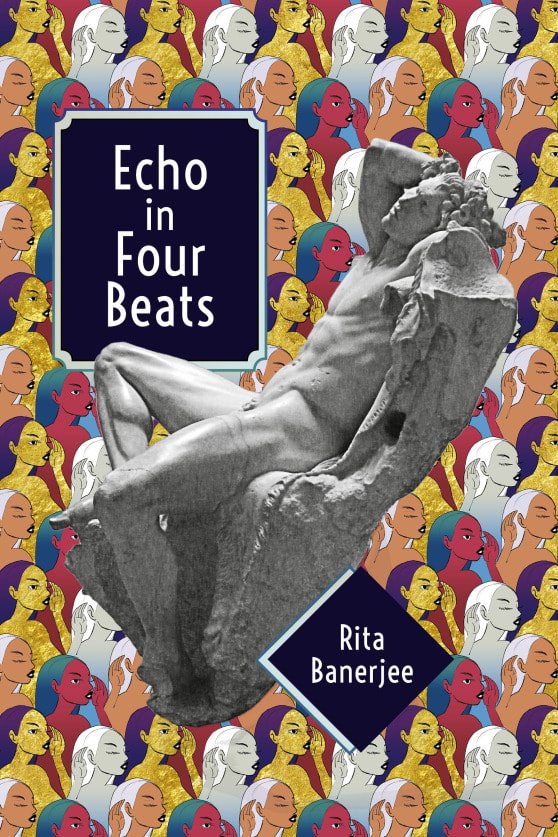|
A Box of Crazy Toys by Peter Dellolio (Xenos Books, 2018)
Review by Greg Bem Silent films are projected upon the foreheads of children. The little ones vomit miniature skyscrapers made of exotic African woods. (from “Skeleton Accordions”) Entering the world of Peter Dellolio is a walk along the bridge between charming and disturbing. To read his short forays into narrative poetry is to be immersed in the dreamscapes of another’s twisted mind. The sensations of imagery as grotesque as they are marvelous are sensations disturbingly crystalline. The metaphors of these poems are enthralling but agonizingly elsewhere; a book as relentless as A Box of Crazy Toys may be one better to take in small bits rather than, as per my approach, read in a single go. The world among us is filled with a roaring blend of the absurd and the abstract, and Dellolio’s poems appear to meet that standardization, that landscape of normal weirdness, head-on. In reading A Box, I couldn’t help but find analogous contexts of the bizarre and spaces of the extreme like Magical Realism Bot, a Twitter account with the sheer purpose of going to the edges of understanding with heightened juxtapositions and realms of distortion. Likewise, I was reminded by the Surrealists, whose operations nearly 100 years ago found similar resolutions and conclusions through their own bending and prying of an emerging world of crisis and reaction. Indeed, Dellolio’s “box” appears to be in the same way a toolkit to showing readers what is possible through the mechanisms of an opened, unrepentant mind, a mind capable of agreeing to the extreme image and holding itself accountable to it as well. Cream puff nipples on the muscular breast of the lion tamer. (from “Maggot Wheels”) And yet despite these fervent commitments, these sequences of wrestling the lines toward new heights of interpreting and appreciating the booming world of this continuing bark of a 21st Century, there is a noticeable difference between the roots, the ancestors, the earliest writers taking these approaches. Indeed, while the Dadaists, Surrealists, Expressionists, and many other loud groups engaging the image as a form of triumph and call to understanding power, focusing on social evolution, and otherwise rewiring the poet’s voice, the work of Dellolio here appears to be softer, softly incandescent, and even withheld. A rigidity that strikes me as apolitical and even (at best) timid and (at worst) repressed emerges out of the miscellaneous craziness of Dellolio’s “toys.” The playfulness and the toying around does not strike me as youthful and childlike, but rather reflective of the consumerism and information overload serving the beck and call of the new Americanization of the 2010s. A space uprooted by search engines, fluttering social media posts, and submerged cellphone behavior. A moment in human bondage honoring and protecting displacement, quietude, and passivity. In some ways, these qualities of the shared, damned reality of so many appear as faux friendliness, but the inner conflicts that continue to cause crisis and discontent, evolved marginalization and demonization alike, pop out of the “box” much like the viral content, the glittering popularity, the potential for greatness. The irony of the “crazy toy” is that it’s most enjoyable but also most chaotic; it is, like Dellolio’s images and poetic instances, a presence both gravitational and destructive. To the book’s benefit and detriment, these poems are hardly self-referential, and hardly evoke a world beyond themselves. They are, like Magical Realism Bot, so far pushed into the absurd and abstract that their landscape is one of isolation; there is a protection and confinement that allows them to flourish and stand brightly on their own, but how they move beyond their own privileged cores is unnoticeable. And perhaps that’s the point, in reading A Box of Crazy Toys, in thinking about the ultimate constraint of poetry (perhaps now, perhaps always), that there is a context that will always be present and yet unavoidable. A context of constraint, an engagement of limitation, a necessary restriction to the dreams and desires of the poet themselves. The dolphin, weeping for its fallen brethren, slaughtered and fashioned into this artificial speaking device, dons a whipped cream space helmet and floats towards the rocket. (from “The Clown’s Three Large Buttons”) Pulling through what are quite clearly memories of actual places, situations, and circumstances, from his life and memories, Dellolio’s poems in A Box of Crazy Toys are, despite their level of the beyond, quite human. They are personal, they are funny, and they are communicative. I found myself laughing with these poems in ways I haven’t with poetry in some time. Despite the contentions the book aroused in my own understanding of a poetic present, this collection served with modes of entertainment, aesthetic appreciation, and a warmth toward fresh investigations of language. The yearning to keep reading made me question the antiquity of many forms of poetry, and where the poet may or may not be serving. I wonder if Dellolio has considered the effect of such poetry, in its extreme forms, as existing and affecting outside of itself, of continuing to expand beyond its own limitations once it infectiously brushes up against the reader. Where the poet may take their elements of the magical and of the real going forward is curious. How the conversation might be more directly woven beyond the poems themselves, if such a thing is possible, is even more curiouser.
3 Comments
Echo in Four Beats by Rita Banerjee (Finishing Line Press, 2018)
Review by Greg Bem For every moving shade, there was a jewel, a bunt cake, tea with honey, rubies, too, found them dead in a village near the Ganges, in some bastard king’s chest (from “Pygmalion & the Slippers") Rita Banerjee’s Echo in Four Beats is a positive book. It is a book about positivity. It is a book about attraction. As much as it reflects the complex curiosities of the poet herself, this short, four-part poetry collection also reflects the curious ways extremely otherly and othered objects and cultures carry capacity and phenomenological connection with one another. East to West. The ancients to the contemporaries. Language and translation. These juxtapositions are arrived with Banerjee’s poetic presence, not quite lyrical, not quite narrative, not quite conceptual, which provides appropriate spaces and ranges to explore rather fully a world of integration. At its core, the book is about Ovid’s myth of Echo and Narcissus, which serves as a fitting allegory for poetry in general, but also the landscape previously-described. A dualism within the speakers of these poems is a dualism of acceptance and rejection, of sequences of flight and iterations of home. There is sexuality and there is the sterility of that reflective promise. But complexly, Banerjee’s work carries that sterility into discoveries and modes of joy, fervor, and the interrogative push towards the refresh, towards the new, towards the validated and the enlivened. We were like that—lanterns in the midday sun, laughter against a white-noise wind, tongues circling salt-water stories, cliffs cocooned by the afternoon, cameras catching harbor fish, reptiles, serpents, impossible possibilities-- (from “Atlantis”) Much of the experience where these transformations are derived, carried by the mythic allegories the poet’s subtle adaptations of ancient lessons, is tangibly encountered in place and culture. While the back cover of Echo in Four Beats contains a quote by Jaswinder Bolina describing the book as “post-national,” I believe the antithesis is far more obvious. This is a book collecting poems that encounters and elevates individual nations, individual cultural histories, and appreciates them through their intertwining. In the ways the otherness in Echo and Narcissus is an otherness of affection and difference, so too is the distinct origins of the spaces and roots presented in this book. The curses (or constraints) of the mythological beings further iterate a substantive metaphor in Banerjee’s voices, which identifiably rely on the power of other people, other poems, other traditions, and even other languages to thrive. The occasional poem in Japanese and Hindi, as well as pulled in language from European languages (most commonly French) are important examples of graceful appropriation. There is accountability, responsibility, and a joyful positioning of attraction towards those spaces that existed before and separate from Banerjee and this book, and while the messiness of it in totality may appear “post-national,” I would use other, more appreciative words like “subtle” and “hazy” to describe the effect of the poet’s language on the embodied elements of multiple cultures. from all four directions, in the sky’s dance, the world appeared unreal, and in each broken piece of water, the moon remained, laughing-- (from “One Night” (translated from the Hindi by the poet)) Multiplicity is an important element of the book’s core for multiple reasons. Structurally, I found the book’s four quarters (or sections) of the book to parse the book’s fluttering, experiential nature in a way that complements rather than detracts. For the general reader, the book's sections are not entirely explained. Though there is a slight haze surrounding the segmentation, a general thematic trajectory brings the writing across culture and geography. The book opens with sequences of predominantly American writings (inclusive of music) that then move through glimpses of Japan and India. Within the last section Banerjee wraps the book up with a presentation of miscellaneous musings, though their collection at the end appears as a symbolic gesture of dissipation. Additional complexity to structure is added through a handful of erasures responding to A.S. Kline’s translations of The Metamorphoses, a handful of “mis-translation” poems riffing on the likes of an abundant variety of thematically-relevant sources, including a Romani folk poem, a Hebrew prayer, and a poem by Baudelaire. These fragments of voices, echoing across the cultural spectrum we all must, in reality, understand, elevates and amplifies and contributes to Echo in Four Beats. In Nevada, the stars throw down their silver bounty to the bear dancing on one leg, and when the sky comes down to devour us, it rains in quarters. (from "Currency") Those outside (external) images and ideas, while symbolic to the nature and inspiration of the book, do not completely overshadow or displace Banerjee and her own cunning use of language. I found most of the poems within the book that appear to lack direct references both compelling with memorable. The poet’s mind-shifting language include lines and stanzas incredibly capable of existing within their own, engrossing centers. Indeed, they emerge and disappear calmly, like distant lightning, and drag on, their memories moving from poem to poem, creating causality and a sense of overlapping resolution. Though not entirely sonic-oriented to be considered lyrical, these fragments within her poems are concise moments of implanting. They score and scourge, and represent, as objective language, as a sense of craft. And that craft moves along beneath the narrative trajectory of the book, a bubbling sense of the underneath, a layer of Thanatos and the urge toward definition and stillness. In sum, Banerjee’s Echo in Four Beats provides a poetic space somewhere between engrossing and lightly attractive. That positivity moves from theme and culture to the language within and beyond. It’s a pleasurable space that will hopefully serve to inform, serially, a future for the poet and her mind’s next conjured spaces of communication. We will supplicate, sublime, and let our bodies dance through reverence. (from “Thanatos”) |
Welcome to Yellow Rabbits. Thanks for visiting.
All reviews by Greg Bem unless marked otherwise.
SearchYellow Rabbits Reviews
Archives by Month
August 2019
|


